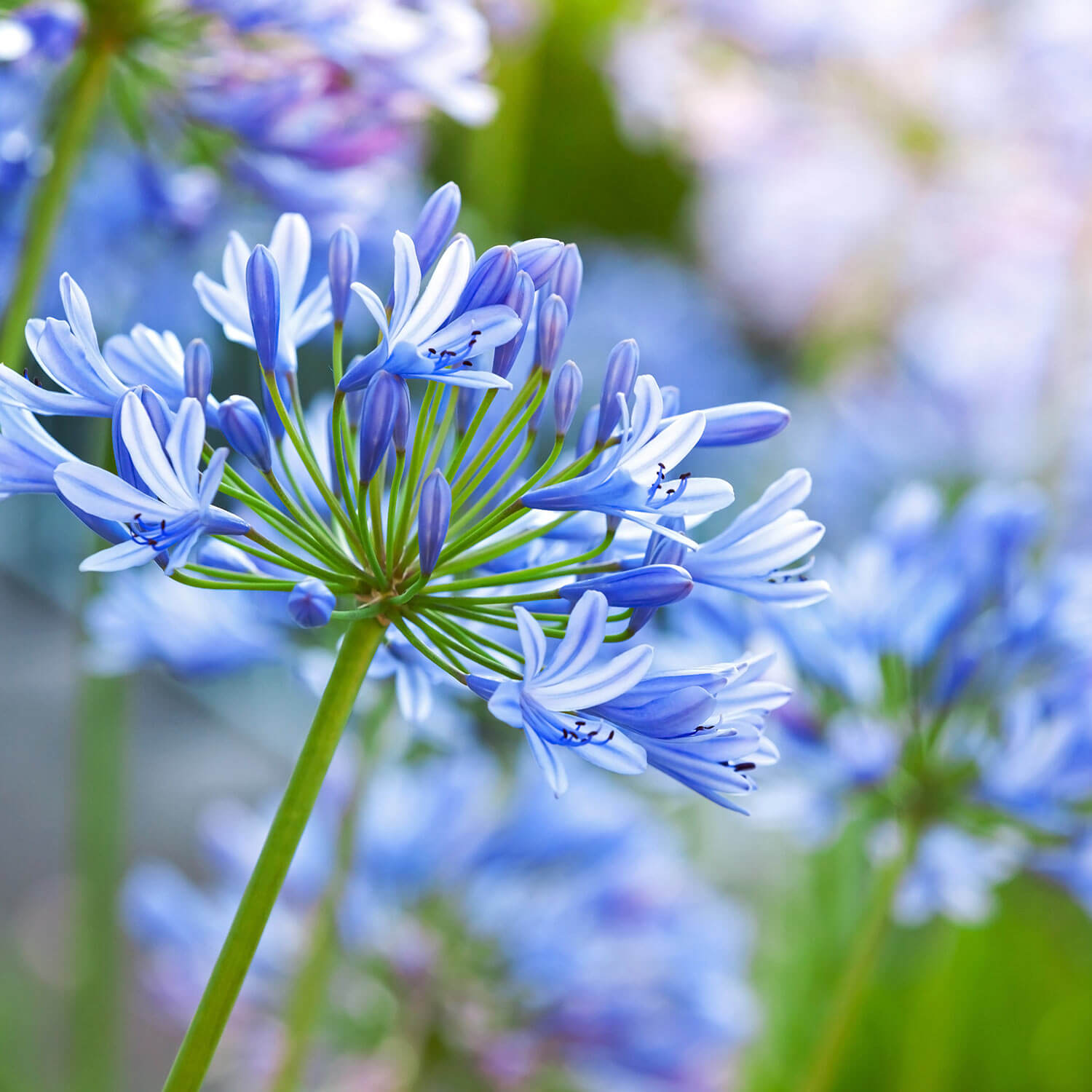Grasping the Art of Agapanthus Treatment: Necessary Steps for Healthy Development and Vibrant Blossoms
In the realm of horticulture, the cultivation of agapanthus stands as a satisfying undertaking for those that look for to nurture these sophisticated blooming plants. From selecting the appropriate range to understanding pruning strategies, the trip in the direction of cultivating flourishing agapanthus plants is multifaceted and holds the vital to opening the full possibility of these herb gems.

Picking the Right Agapanthus Selection

When selecting the appropriate Agapanthus variety for your yard, take into consideration aspects such as environment viability, flower shade, and growth routine. Additionally, think about the climate in your area to guarantee the Agapanthus selection you pick can thrive in your particular problems. Recognizing the growth routine of various Agapanthus selections is crucial for appropriate placement within your garden.
Suitable Planting Problems
Considering the ideal ecological requirements is important for successful Agapanthus cultivation. Agapanthus plants are delicate to cool temperature levels and ought to be shielded from frost during wintertime months.
To make certain healthy and balanced growth and dynamic blooms, plant Agapanthus bulbs at a deepness of concerning 2-4 inches and room them 8-12 inches apart. Mulching around the base of the plants aids keep dampness and reduces weed growth.
Watering and Feeding Tips
Maintaining correct moisture levels and providing necessary nutrients are crucial elements in the care program for Agapanthus plants. When it concerns watering Agapanthus, it is crucial to strike a balance. These plants choose consistently damp soil however are susceptible to root rot if overwatered. During the expanding season, water deeply as soon as a week, making certain the dirt is well-draining to stop waterlogging. In hotter climates or during durations of drought, even more constant watering might be necessary to maintain the soil uniformly damp. Nonetheless, decrease watering in the winter months to stop waterlogged problems.
Fertilizing Agapanthus is crucial for promoting healthy growth and prolific blossoms. Use a well balanced fertilizer, such as a 10-10-10 formula, in the very early springtime as brand-new growth emerges. Repeat this application every 6-8 weeks throughout the expanding season. Prevent too much fertilization, as it can bring about lush foliage at the expense of blossoms. Always follow the maker's instructions for correct dilution and application techniques. By following these watering and feeding additional hints ideas, you can ensure your Agapanthus plants flourish and produce dynamic, long-lasting blossoms.
Trimming Techniques for Agapanthus
Trimming Agapanthus plants at the suitable times and with appropriate methods is essential for maintaining their health and advertising optimal growth and blooming. The ideal time to trim Agapanthus remains in late wintertime or early springtime prior to brand-new growth emerges. Start by removing any yellowing or dead fallen leaves near the base of the plant. Cut them as close to the ground as feasible without harming the arising shoots.
Deadheading invested flowers can likewise reroute the plant's power into generating more blooms instead than establishing seeds. If you want to collect seeds for breeding, leave some flowers to mature and dry on the plant.
Keep in mind to use clean, sharp devices to make exact cuts and reduce the threat of learn the facts here now introducing illness. Agapanthus. Regular pruning will aid maintain your Agapanthus looking cool and healthy and balanced while making sure an abundant display of gorgeous blooms
Managing Usual Bugs and Diseases
After making sure appropriate trimming methods for Agapanthus, it is important to address common pests and conditions that can impact the wellness and vitality of these plants. Agapanthus plants are generally sturdy yet can still come down with particular issues. One typical parasite that impacts Agapanthus is the Agapanthus gall midget. This small, orange fly lays its eggs in the foliage, leading to distorted growth and blossom buds that fall short to open. To fight this pest, trim and ruin any kind of damaged plant parts and consider using insecticidal soap.
In addition, Agapanthus plants can experience from root rot if they are grown in badly draining pipes dirt. By being alert and taking punctual action against bugs and conditions, you can aid your Agapanthus plants prosper and create lively flowers. Agapanthus.

Conclusion
In final thought, mastering the art of agapanthus care entails choosing the ideal range, supplying suitable planting problems, appropriate watering and feeding, proper pruning methods, and dealing with typical bugs and illness. By following these crucial steps, you can make sure healthy and balanced development and lively blooms for your agapanthus plants. Bear in mind to regularly monitor and preserve your plants to promote their overall well-being and long life.
To make sure healthy and balanced growth and vibrant blooms, plant Agapanthus bulbs at a deepness of regarding 2-4 inches and room them 8-12 inches apart. By complying with these watering and feeding go to these guys ideas, you can ensure your Agapanthus plants grow and create vivid, lasting blossoms.
One common pest that impacts Agapanthus is the Agapanthus gall midget. In addition, Agapanthus plants can endure from origin rot if they are grown in improperly draining pipes dirt. By following these necessary actions, you can make certain healthy growth and vivid blossoms for your agapanthus plants.